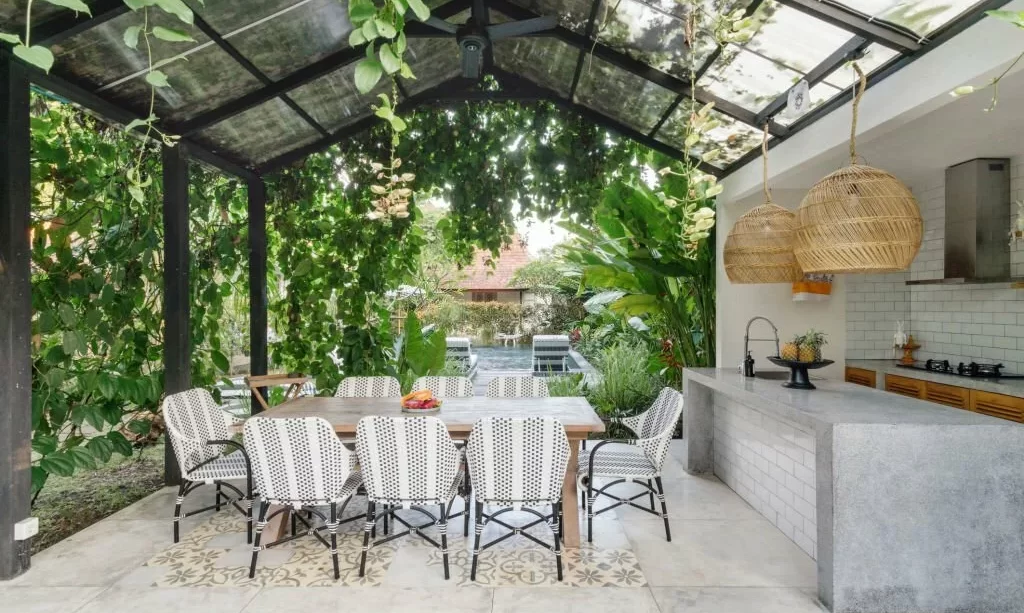As our lives become increasingly fast-paced and urbanized, the desire for a connection to nature remains a timeless pursuit. One architectural marvel that embodies this longing is the conservatory room. These spaces, often found in homes and public settings, offer a unique blend of indoor comfort and outdoor ambiance. In this article, we’ll embark on a journey to explore the beauty and significance of conservatory rooms. From their defining features to the evolution of their design and purpose, we’ll shed light on these sanctuaries of light and nature that have been enchanting individuals for generations.
Defining a Conservatory Room
Before we delve deeper, it’s essential to define what precisely constitutes a conservatory room. A conservatory is more than just a room with large windows; it’s an architectural wonder that gracefully merges the indoor and outdoor worlds. Characterized by extensive use of glass walls, large windows, and an abundance of natural light, a conservatory room serves as a bridge between the comforts of indoor living and the tranquility of nature. These spaces are carefully designed to provide a nurturing environment for plants, relaxation, or a variety of activities that allow individuals to enjoy the beauty of the outdoors without leaving the shelter of their home.
History and Evolution
The roots of conservatory rooms trace back to European traditions, particularly those in England and France. These early conservatories were constructed to nurture exotic plants, as the glass walls created a microclimate that could support plant life even during harsh winters. Over time, conservatories evolved from functional plant sanctuaries to multi-purpose living spaces that catered to human comfort and aesthetic pleasure. They expanded in both size and design, with influences from various architectural styles, creating unique and charming structures that enchanted those who entered. Today, conservatory rooms continue to evolve, adapting to modern living while maintaining their essential connection to the natural world.
Features and Design Elements
Conservatory rooms are not just characterized by their abundant use of glass; they encompass a range of features and design elements that contribute to their unique charm. The architectural design of conservatories is carefully thought out, with a focus on aesthetics, comfort, and functionality. Elements such as ornate wrought iron frames, glass roofs, and tall, gracefully arched windows are common. These elements not only provide structural support but also add a touch of elegance to the space. Ventilation systems are also integrated, allowing for regulation of temperature and air circulation. Moreover, design choices often include stone or tile flooring that can withstand humidity, creating a durable yet visually appealing foundation. These features, combined with creative decor, create an inviting environment that beckons occupants to relax, read, dine, or simply bask in the natural surroundings.
Utilizing Natural Light
One of the most enchanting aspects of conservatory rooms is their ability to harness natural light. The extensive glass walls and roofs act as conduits for sunlight, allowing it to flood the space from every angle. This profusion of natural light not only enhances the visual appeal of the room but also has numerous benefits for those who use it. The presence of sunlight can positively affect mood, productivity, and overall well-being. Whether you’re enjoying your morning coffee, reading a book, or tending to your indoor garden, the gentle caress of natural light creates an atmosphere that is both invigorating and soothing. It blurs the boundaries between indoors and outdoors, providing a space where you can enjoy the beauty of all seasons, from the vibrant blooms of spring to the cozy charm of winter.
Indoor Gardening in Conservatories
Conservatory rooms are uniquely suited for indoor gardening. The combination of natural light, controlled climate, and humidity levels offers an ideal environment for a wide variety of plants. In these sun-drenched spaces, you can cultivate everything from delicate orchids to lush ferns, and even tropical species that wouldn’t thrive in less hospitable conditions. The design elements, such as ample space and easy access to water, make caring for your indoor garden a delightful experience. Whether you’re an experienced gardener or just starting out, a conservatory provides the perfect setting for nurturing your green thumb. Indoor gardens in conservatory rooms add a touch of vibrant nature to your home, creating a living sanctuary that’s both beautiful and peaceful.
Creating a Relaxation Oasis
Conservatory rooms have an inherent ability to transform into relaxation oases. With comfortable furnishings and thoughtful decor, these spaces become retreats from the hustle and bustle of daily life. Imagine a cozy sofa nestled beneath a canopy of greenery, or a recliner bathed in the warmth of the sun’s rays. Conservatory rooms provide a peaceful environment for unwinding, meditating, or simply enjoying a cup of tea while the world outside dances with light and life. The ever-present connection to nature, combined with the comforts of indoor living, creates a unique haven for relaxation where the stresses of the day can melt away.
Versatility in Use
One of the remarkable attributes of conservatory rooms is their versatility. These spaces can serve a wide range of purposes, making them adaptable to your lifestyle. Whether you’re hosting a garden party, using it as a home office, or even as a personal gym, conservatory rooms can accommodate your specific needs. They provide an extension of your living space, inviting you to explore various activities in an environment bathed in natural light and surrounded by the beauty of the outdoors. The possibilities are limited only by your imagination, and these rooms can become a vibrant part of your daily life.
Maintenance and Care
To ensure that your conservatory room remains a flourishing sanctuary, proper maintenance and care are essential. Regular cleaning of the glass and frames is necessary to maintain the clarity of the windows and the integrity of the structure. It’s also crucial to attend to the plants you nurture, as they contribute significantly to the atmosphere of the room. Preventing overgrowth and maintaining optimal humidity levels are vital aspects of plant care. Addressing any issues such as leaks, drafts, or condensation promptly will help keep the conservatory in excellent condition. Regular inspections and upkeep contribute to the longevity and appeal of your conservatory.
Conclusion
In conclusion, conservatory rooms are more than just glass and architecture; they are living spaces that bridge the gap between the indoors and the natural world. Whether used for indoor gardening, relaxation, social gatherings, or as multi-purpose extensions of your home, these enchanting spaces offer a unique and harmonious blend of comfort and nature. The history and evolution of conservatory rooms showcase their enduring appeal, while their features, versatility, and the care required emphasize their potential to enrich our lives. Embracing the beauty of conservatory rooms is an invitation to experience the wonder of the outdoors within the comfort of our homes, a delightful journey of light, life, and relaxation.



